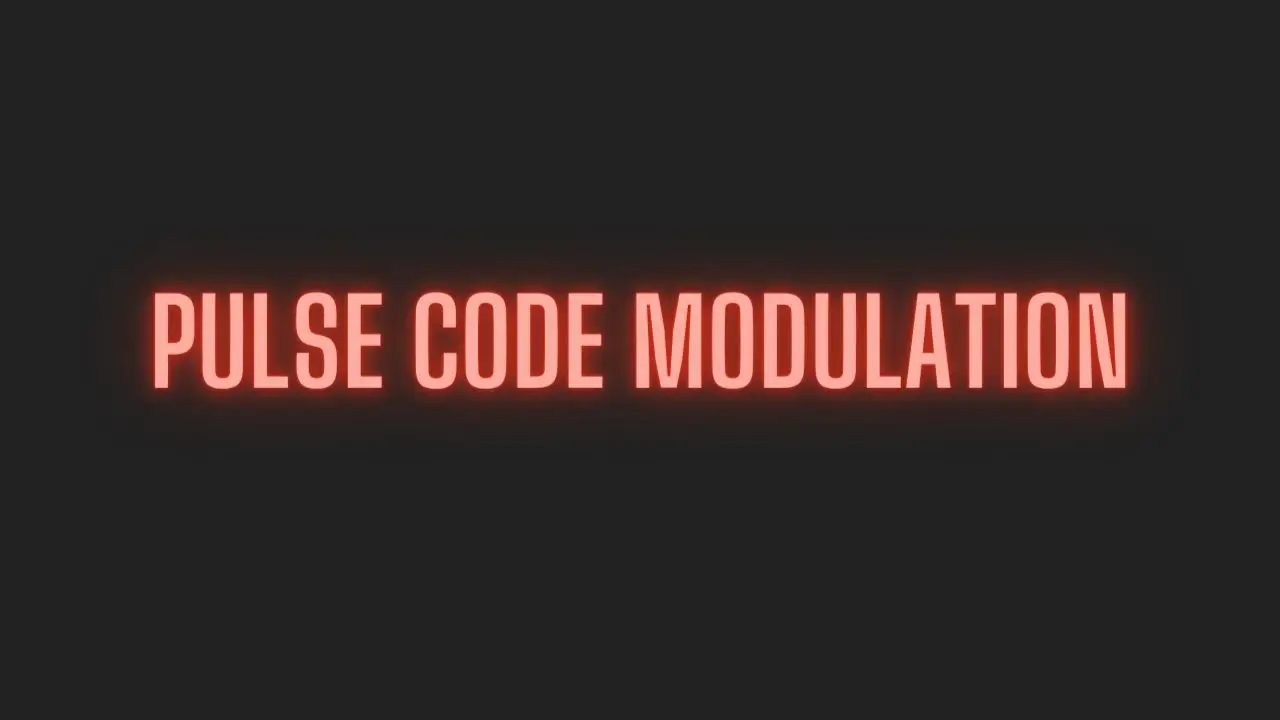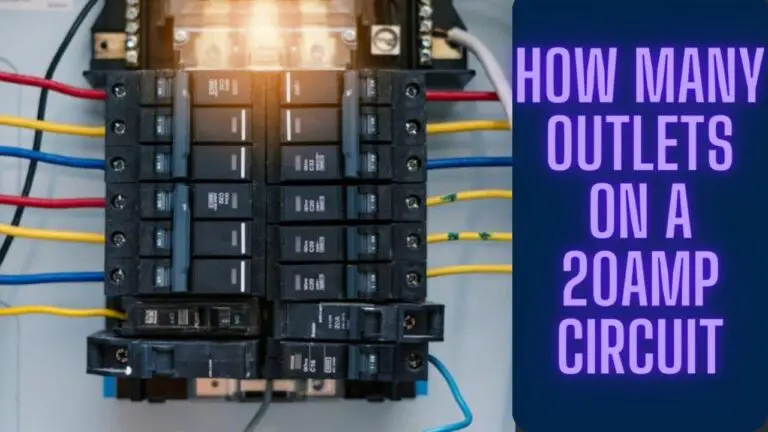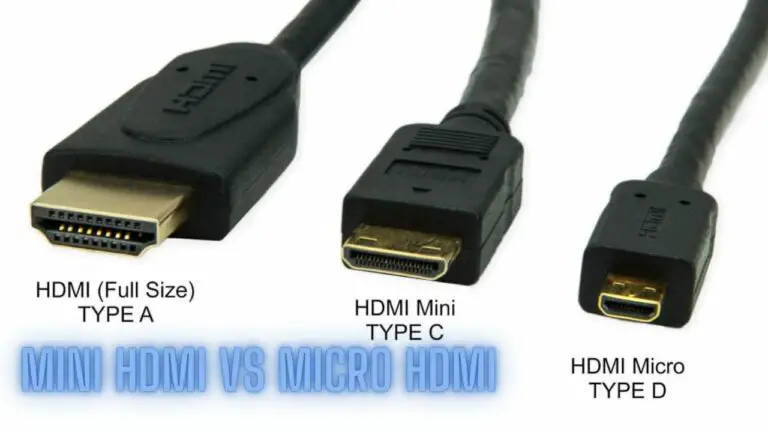PCM (Pulse Code Modulation) Simplified: What You Need to Know
Introduction
PCM, or Pulse Code Modulation, is a digital representation method used to convert analog signals into digital signals for transmission or storage. It is a fundamental technique widely employed in various communication systems, audio recording, and other digital applications. In PCM, the amplitude of the analog signal is sampled at regular intervals and quantized to a discrete value, resulting in a series of binary code words that represent the original signal. This guide provides an overview of PCM, including its principles, techniques, applications, and advantages.
Basics of Analog and Digital Signals
Analog Signals:
Analog signals are continuous waveforms that represent physical quantities such as voltage, current, or sound waves. In analog systems, the signal varies smoothly over time and can take on any value within a continuous range. Examples of analog signals include the voltage output of a microphone, the sound waves produced by a speaker, and the varying voltage levels in an electrical circuit.
Digital Signals:
Digital signals, on the other hand, are discrete representations of analog signals. They consist of a series of binary digits (0s and 1s) that encode the information. Digital signals are used in digital communication systems, computers, and other digital devices. Unlike analog signals, which can have an infinite number of possible values, digital signals can only take on a finite set of discrete values. This makes digital signals less susceptible to noise and distortion and easier to process and transmit over long distances.
Comparison:
- Analog signals are continuous and can have an infinite number of values within a range, while digital signals are discrete and can only have a finite number of values.
- Analog signals are susceptible to noise and distortion, which can degrade signal quality over long distances, while digital signals can be reliably transmitted and processed with minimal degradation.
- Analog signals require continuous transmission and processing circuits, while digital signals can be easily manipulated and processed using digital electronics and algorithms.
In PCM, analog signals are sampled at regular intervals and quantized into discrete digital values, allowing them to be transmitted, stored, and processed using digital techniques. This conversion process is essential for modern communication systems, audio recording, and other digital applications.
Principles of Pulse Code Modulation
Pulse Code Modulation (PCM) is a digital modulation technique used to convert analog signals into digital form for transmission or storage. The principles of PCM involve several key concepts:
- Sampling: The analog signal is sampled at regular intervals in time. Each sample represents the amplitude of the analog signal at that particular instant. The sampling rate, measured in samples per second (Hz), determines the number of samples taken per second and is crucial for accurately representing the original analog signal.
- Quantization: After sampling, each sample’s amplitude is quantized, meaning it is assigned a discrete numerical value from a finite set of possible values. The range of possible values and the number of bits used to represent each sample determine the resolution of the PCM system. A higher resolution allows for more precise representation of the analog signal but requires more bits per sample.
- Encoding: The quantized samples are then encoded into digital form using binary code. Each quantized sample is represented by a binary word, typically consisting of a fixed number of bits. The encoding process assigns a unique binary code to each quantized sample, allowing it to be transmitted or stored digitally.
- Transmission or Storage: The digital PCM signal, consisting of the binary-encoded samples, can be transmitted over communication channels or stored in digital storage media such as computer memory or disk drives. PCM signals are robust against noise and interference, making them suitable for long-distance transmission and high-quality audio recording.
- Decoding: At the receiving end, the digital PCM signal is decoded back into analog form. This involves reconstructing the original analog signal from the binary-encoded samples. The decoding process involves converting the binary codes back into analog voltage levels, which are then reconstructed into a continuous waveform resembling the original analog signal.
Overall, PCM provides a reliable and efficient method for converting analog signals into digital form, allowing for accurate transmission, storage, and processing of audio and other analog signals in digital communication systems and recording devices. The principles of PCM play a crucial role in modern telecommunications, audio recording, and digital signal processing applications.
Sampling and Quantization in Pulse Code Modulation (PCM)
Sampling and quantization are two fundamental processes in Pulse Code Modulation (PCM) used to convert analog signals into digital form. Let’s delve into each process:
- Sampling:
- Sampling involves measuring the amplitude of the analog signal at discrete time intervals.
- The analog signal is sliced into discrete samples, with each sample representing the signal’s amplitude at a specific point in time.
- The sampling rate (measured in samples per second or Hz) determines how frequently samples are taken. According to the Nyquist-Shannon sampling theorem, the sampling rate must be at least twice the highest frequency component of the analog signal to avoid aliasing and accurately reconstruct the original signal.
- A higher sampling rate captures more details of the analog signal, resulting in a more faithful digital representation. However, it also requires more data to represent the signal, increasing storage and processing requirements.
- Quantization:
- Quantization involves converting the continuous amplitude of each sample into a discrete digital value.
- The range of possible amplitude values is divided into distinct intervals, or quantization levels. Each quantization level corresponds to a unique digital value.
- The number of bits used to represent each sample determines the resolution or granularity of the quantization. More bits allow for finer distinctions between amplitude levels and higher fidelity in the digital representation.
- During quantization, the analog amplitude value is rounded or truncated to the nearest quantization level, resulting in quantization error or quantization noise. This error contributes to the overall distortion of the digital signal but can be minimized by using a sufficient number of quantization levels (higher bit depth).
In PCM, the combined effect of sampling and quantization results in a series of discrete digital samples that approximate the original analog signal. These digital samples can be transmitted, stored, and processed using digital systems, enabling various applications such as digital audio recording, telecommunications, and signal processing. The choice of sampling rate and quantization parameters depends on the specific requirements of the application, balancing fidelity with efficiency and resource constraints.
Nyquist Theorem and Sampling Rate in Pulse Code Modulation (PCM)
The Nyquist-Shannon sampling theorem, often referred to simply as the Nyquist theorem, is a fundamental concept in digital signal processing, including Pulse Code Modulation (PCM). It establishes the relationship between the sampling rate and the frequency content of the analog signal to ensure accurate digital representation. Here’s how it works:
- Nyquist Theorem:
- The Nyquist theorem states that to accurately reconstruct a continuous analog signal from its samples, the sampling rate must be at least twice the highest frequency component of the analog signal.
- Mathematically, the Nyquist theorem can be expressed as:
fs ≥ 2 * fmaxwhere:fsis the sampling frequency (sampling rate) in samples per second (Hz).fmaxis the maximum frequency component of the analog signal in Hertz (Hz).
- Explanation:
- According to the Nyquist theorem, the sampling rate should be high enough to capture all the frequency components present in the analog signal.
- If the sampling rate is too low relative to the signal’s frequency content, aliasing occurs. Alias frequencies, which are false frequency components, are produced in the digitized signal due to undersampling.
- By sampling at a rate at least twice the highest frequency component (i.e., above the Nyquist frequency), aliasing is avoided, and the original analog signal can be accurately reconstructed from its samples.
- Application in PCM:
- In PCM, the Nyquist theorem guides the choice of sampling rate to ensure faithful representation of the analog signal.
- The highest frequency component of the signal, known as the bandwidth, determines the minimum required sampling rate.
- For audio signals, the human hearing range typically extends up to 20 kHz. Therefore, a sampling rate of at least 40 kHz (twice the highest audible frequency) is commonly used in audio PCM systems, such as CD audio (44.1 kHz) or digital audio recording (48 kHz, 96 kHz, etc.).
In summary, the Nyquist theorem is a critical principle in PCM and digital signal processing, ensuring that the sampling rate is sufficient to accurately represent the analog signal without introducing aliasing artifacts. Adhering to the Nyquist criterion is essential for high-quality digital audio and other PCM applications.
Quantization Levels and Resolution
In PCM, quantization involves converting the continuous amplitude of each sample into a discrete digital value. The number of discrete values that the amplitude can be quantized into is determined by the number of quantization levels, which directly affects the resolution of the PCM system. Let’s explore this concept further:
- Quantization Levels:
- Quantization levels represent the number of distinct amplitude values that can be assigned to each sample.
- The number of quantization levels is determined by the number of bits used to represent each sample. For example, if N bits are used, there are 2^N quantization levels available.
- More quantization levels result in finer distinctions between amplitude levels and higher resolution in the digital representation of the analog signal.
- The quantization levels determine the dynamic range of the PCM system, which is the range of amplitude values that can be accurately represented without distortion.
- Resolution:
- Resolution refers to the level of detail or granularity in the digital representation of the analog signal.
- In PCM, resolution is typically measured in bits per sample (bit depth). A higher bit depth results in higher resolution and better fidelity in representing the original analog signal.
- The resolution of a PCM system is directly proportional to the number of quantization levels and inversely proportional to the quantization error or quantization noise.
- Quantization error occurs due to the difference between the actual analog amplitude and the closest quantization level. Increasing the number of quantization levels (higher resolution) reduces the quantization error and improves the signal-to-noise ratio (SNR) of the PCM system.
- Trade-off:
- Increasing the number of quantization levels (higher resolution) requires more bits per sample, leading to larger file sizes and increased processing and storage requirements.
- Conversely, decreasing the number of quantization levels (lower resolution) reduces the file size and resource requirements but sacrifices signal fidelity and dynamic range.
- Example:
- For example, in 16-bit PCM audio, there are 2^16 (65,536) quantization levels available. This allows for a high-resolution representation of the audio signal, capturing subtle amplitude variations and preserving the dynamic range of the original analog signal.
In summary, quantization levels and resolution play a crucial role in PCM, determining the fidelity and accuracy of the digital representation of analog signals. By selecting an appropriate bit depth and number of quantization levels, PCM systems can achieve the desired balance between signal fidelity, dynamic range, and resource efficiency.
Signal-to-Noise Ratio (SNR) in PCM
Signal-to-Noise Ratio (SNR) is a critical performance metric in PCM systems, representing the ratio of the desired signal power to the noise power present in the digitized signal. In PCM, quantization introduces quantization noise, which can degrade the signal quality. Let’s explore SNR in PCM:
- Quantization Noise:
- Quantization noise is introduced during the quantization process, where the continuous analog signal is discretized into digital values.
- Quantization noise arises due to the difference between the actual analog amplitude and the nearest quantization level. It manifests as an error in the digital representation of the analog signal.
- As the number of quantization levels increases (higher resolution), the quantization noise decreases, resulting in a higher SNR and better signal fidelity.
- SNR Calculation:
- SNR is typically expressed in decibels (dB) and calculated using the formula:
SNR = 10 * log10(Signal Power / Noise Power)- Signal Power: The power of the desired signal, usually measured in watts or volts squared.
- Noise Power: The power of the quantization noise, usually measured in watts or volts squared.
- A higher SNR indicates a stronger signal relative to the noise and better signal fidelity.
- SNR is typically expressed in decibels (dB) and calculated using the formula:
- Impact on Signal Quality:
- A higher SNR in PCM systems indicates that the digitized signal contains less noise relative to the desired signal, resulting in higher audio quality or fidelity.
- SNR is a critical factor in determining the dynamic range of PCM audio systems. A higher SNR allows for a wider dynamic range, preserving subtle details in quiet passages and minimizing distortion during playback.
- Improving SNR:
- Increasing the resolution (number of quantization levels) in PCM systems improves SNR by reducing quantization noise.
- Using noise shaping techniques, such as dithering or noise shaping filters, can redistribute quantization noise to frequency regions where it is less perceptible, effectively improving SNR without increasing the bit depth.
- Employing higher-quality analog-to-digital converters (ADCs) and digital signal processing (DSP) algorithms can also contribute to improved SNR in PCM systems.
- Practical Considerations:
- Achieving a high SNR is essential for maintaining audio quality in PCM audio systems, especially in professional audio recording and playback applications.
- Designers must balance the trade-offs between resolution, SNR, and resource requirements to optimize PCM systems for specific applications and performance requirements.
In summary, SNR is a key performance metric in PCM systems, reflecting the quality of the digitized signal relative to the quantization noise. By understanding and optimizing SNR, PCM systems can achieve high-quality audio reproduction and accurate representation of analog signals.
PCM Encoding and Decoding Process
The Pulse Code Modulation (PCM) process involves encoding analog signals into digital form for transmission or storage, followed by decoding the digital signal back into analog form for playback or processing. Here’s a detailed overview of the PCM encoding and decoding process:
1. PCM Encoding:
a. Sampling: The analog signal is sampled at regular intervals in time. Each sample represents the amplitude of the analog signal at that particular instant. The sampling rate determines the number of samples taken per second.
b. Quantization: Each sample’s amplitude is quantized into a discrete digital value. This involves dividing the range of possible amplitude values into distinct intervals or quantization levels. The number of quantization levels determines the resolution of the PCM system.
c. Encoding: The quantized samples are encoded into binary form using a coding scheme such as pulse code modulation. Each quantized sample is represented by a unique binary code, typically consisting of a fixed number of bits. The encoding process assigns a binary code to each quantized sample, allowing it to be transmitted or stored digitally.
2. PCM Decoding:
a. Reception: The digitally encoded PCM signal is received at the destination, whether it’s a playback device, storage medium, or processing unit.
b. Decoding: The binary-encoded samples are decoded back into analog form. This involves converting the binary codes back into analog voltage levels, which are then reconstructed into a continuous waveform resembling the original analog signal.
c. Digital-to-Analog Conversion (DAC): The decoded binary values are passed through a digital-to-analog converter (DAC). The DAC converts the digital samples into analog voltage levels proportional to the binary values.
d. Reconstruction: The analog voltage levels are reconstructed into a continuous waveform that closely resembles the original analog signal. This reconstructed signal can then be played back through speakers, processed digitally, or stored for future use.
3. Additional Considerations:
- Sampling Rate and Bit Depth: The choice of sampling rate and bit depth (number of bits per sample) during encoding affects the fidelity and quality of the decoded analog signal. Higher sampling rates and bit depths result in higher-fidelity audio reproduction but also require more bandwidth and storage space.
- Compression: In some cases, the digitally encoded PCM signal may undergo compression techniques to reduce file size or bandwidth requirements during transmission or storage. However, compression techniques can introduce some loss of audio quality, depending on the compression algorithm used.
In summary, PCM encoding and decoding involve sampling, quantization, encoding, reception, decoding, digital-to-analog conversion, and signal reconstruction processes. These processes ensure accurate representation and reproduction of analog signals in digital PCM systems, enabling high-quality audio transmission, storage, and playback.
PCM Applications and Use Cases
Pulse Code Modulation (PCM) finds wide application across various industries and technologies due to its versatility, reliability, and ability to accurately represent analog signals in digital form. Here are some common applications and use cases of PCM:
- Digital Audio Recording and Playback:
- PCM is extensively used in digital audio recording and playback systems, such as CD players, digital audio workstations (DAWs), and streaming media platforms.
- It allows for high-fidelity audio recording and reproduction by accurately converting analog sound waves into digital samples and vice versa.
- Telecommunications:
- PCM is fundamental to digital telecommunications systems, including landline and cellular networks, Voice over Internet Protocol (VoIP), and digital telephone exchanges.
- It enables the transmission of voice signals over digital communication channels, ensuring clear and reliable communication.
- Broadcasting and Television:
- In broadcasting and television, PCM is used for digitizing audio signals, captioning, and subtitling.
- It facilitates the transmission of high-quality audio signals alongside video content, enhancing the viewer’s overall experience.
- Medical Imaging and Diagnostics:
- PCM is employed in medical imaging techniques such as magnetic resonance imaging (MRI) and computed tomography (CT) scanning.
- It helps convert analog signals from medical sensors and imaging devices into digital form for processing, analysis, and diagnosis.
- Industrial Automation and Control Systems:
- PCM plays a role in industrial automation and control systems, where analog signals from sensors and actuators are digitized for monitoring, control, and data analysis purposes.
- It enables precise measurement and control of physical parameters in manufacturing, process control, and robotics applications.
- Digital Signal Processing (DSP):
- PCM serves as the foundation for digital signal processing (DSP) techniques used in audio processing, speech recognition, image processing, and data analysis.
- It enables the manipulation, filtering, and analysis of digital signals to extract useful information and perform various computational tasks.
- Data Storage and Archiving:
- PCM is used for storing and archiving analog data in digital form, such as historical audio recordings, scientific data, and archival documents.
- It ensures long-term preservation and accessibility of valuable information in digital storage media.
- Automotive and Transportation Systems:
- In automotive and transportation systems, PCM is utilized for audio entertainment systems, navigation, driver assistance features, and vehicle communication networks.
- It enables seamless integration of audio, communication, and control functionalities within vehicles.
Overall, PCM has a wide range of applications across industries, spanning from entertainment and communication to healthcare, manufacturing, and beyond. Its ability to faithfully convert analog signals into digital form makes it indispensable in the modern digital age.
Advantages and Disadvantages of PCM
Advantages of Pulse Code Modulation (PCM):
- High Fidelity: PCM offers high-fidelity audio reproduction, preserving the quality and clarity of the original analog signal.
- Low Noise: It provides low noise performance, especially with high-resolution encoding, resulting in minimal distortion and improved signal-to-noise ratio (SNR).
- Digital Processing: PCM signals can be easily processed, manipulated, and transmitted using digital signal processing techniques, facilitating various audio and data processing applications.
- Compatibility: PCM is widely compatible with digital audio systems, communication networks, and storage media, ensuring interoperability and ease of integration across platforms and devices.
- Robustness: Digital PCM signals are robust against noise, interference, and signal degradation during transmission, making them suitable for long-distance communication and harsh environments.
- Scalability: PCM systems can be scaled to accommodate different levels of resolution, sampling rates, and channel configurations, catering to diverse application requirements and performance standards.
- Versatility: PCM is versatile and applicable across various industries and technologies, including telecommunications, broadcasting, medical imaging, industrial automation, and entertainment.
Disadvantages of Pulse Code Modulation (PCM):
- Large File Sizes: PCM audio files can be large, especially at higher resolutions and sampling rates, requiring significant storage space and bandwidth for transmission and storage.
- Processing Overhead: Processing PCM signals may require substantial computational resources, especially for real-time applications or complex signal processing algorithms.
- Complexity: Designing and implementing PCM systems may involve complex algorithms, hardware components, and signal processing techniques, requiring specialized expertise and resources.
- Cost: High-resolution PCM systems and equipment may be costly to develop, manufacture, and maintain, limiting accessibility for some applications or users.
- Limited Dynamic Range: Despite high fidelity, PCM systems may have a limited dynamic range compared to analog systems, particularly at lower bit depths or resolutions.
- Aliasing Artifacts: Inadequate sampling rates can lead to aliasing artifacts, causing distortion and inaccuracies in the reconstructed analog signal.
- Compression Challenges: PCM compression techniques may compromise audio quality or introduce artifacts, affecting the fidelity and naturalness of the reproduced sound.
While PCM offers numerous advantages in terms of audio quality, reliability, and compatibility, it also poses challenges related to file size, complexity, and resource requirements. These factors should be carefully considered when designing and deploying PCM systems for various applications.
Comparison with Other Modulation Techniques
- PCM vs. Analog Modulation:
- Advantages of PCM: PCM offers higher fidelity and robustness compared to analog modulation techniques. It is less susceptible to noise and distortion during transmission, making it suitable for high-quality audio reproduction and long-distance communication.
- Advantages of Analog Modulation: Analog modulation techniques may be simpler and more cost-effective for certain applications. They may also offer lower latency and real-time processing capabilities compared to digital PCM systems.
- PCM vs. Delta Modulation (DM):
- Advantages of PCM: PCM provides higher resolution and fidelity compared to delta modulation. It offers precise control over signal amplitude and better dynamic range, making it suitable for professional audio recording and broadcasting applications.
- Advantages of Delta Modulation: Delta modulation offers simpler implementation and lower computational overhead compared to PCM. It is suitable for low-bit-rate communication systems and real-time applications where simplicity and speed are prioritized over signal fidelity.
- PCM vs. Frequency Modulation (FM) and Amplitude Modulation (AM):
- Advantages of PCM: PCM provides superior signal quality and noise performance compared to FM and AM modulation techniques. It offers accurate reproduction of the original analog signal without distortion or frequency-dependent attenuation.
- Advantages of FM and AM: FM and AM modulation techniques are widely used for radio broadcasting and communication due to their simplicity, efficiency, and wide coverage area. They are suitable for analog audio transmission and are less affected by multipath interference compared to PCM.
- PCM vs. Pulse Width Modulation (PWM) and Pulse Position Modulation (PPM):
- Advantages of PCM: PCM offers higher resolution and better signal-to-noise ratio (SNR) compared to PWM and PPM modulation techniques. It provides precise control over signal amplitude and accurate reproduction of analog signals.
- Advantages of PWM and PPM: PWM and PPM modulation techniques are commonly used in digital control systems, power electronics, and telecommunications. They offer efficient encoding of analog signals into digital form and are suitable for applications requiring rapid switching and modulation.
- PCM vs. Differential Pulse Code Modulation (DPCM):
- Advantages of PCM: PCM offers higher resolution and better fidelity compared to DPCM. It provides accurate representation of the original analog signal without relying on predictive coding or error feedback.
- Advantages of DPCM: DPCM offers higher compression efficiency and lower bit rates compared to PCM. It achieves compression by encoding differences between consecutive samples, making it suitable for bandwidth-constrained communication systems and data storage applications.
In summary, PCM offers superior signal quality, fidelity, and robustness compared to other modulation techniques, making it ideal for high-fidelity audio recording, telecommunications, and data transmission applications. However, the choice of modulation technique depends on specific application requirements, such as signal fidelity, bandwidth, computational complexity, and cost considerations.
Future Trends and Developments in PCM Technology
- Higher Resolution and Sampling Rates:
- Future PCM systems may feature even higher resolution and sampling rates, enabling ultra-high-definition audio recording and playback with greater fidelity and dynamic range.
- Advanced Compression Techniques:
- Researchers are developing new compression algorithms and techniques to further reduce PCM file sizes without sacrificing audio quality, allowing for more efficient transmission and storage of high-fidelity audio content.
- Enhanced Signal Processing:
- Advancements in digital signal processing (DSP) algorithms and hardware are expected to improve real-time processing capabilities in PCM systems, enabling advanced audio effects, spatial audio processing, and immersive audio experiences.
- Integration with Artificial Intelligence (AI):
- AI technologies, such as machine learning and neural networks, may be integrated into PCM systems to optimize audio encoding, decoding, and signal processing tasks, enhancing audio quality and performance.
- Adaptive and Dynamic Encoding:
- Future PCM systems may employ adaptive and dynamic encoding techniques that adjust sampling rates, bit depths, and compression levels based on the characteristics of the audio content and transmission conditions, optimizing audio quality and efficiency in real-time.
- Wireless and IoT Integration:
- PCM technology may be integrated into wireless and Internet of Things (IoT) devices, enabling high-quality wireless audio streaming, voice communication, and sensor data transmission with minimal latency and energy consumption.
- Standardization and Interoperability:
- Efforts to standardize PCM formats, codecs, and protocols may enhance interoperability between different audio devices, platforms, and ecosystems, ensuring seamless integration and compatibility.
- Energy-Efficient Processing:
- Research into energy-efficient signal processing techniques and hardware architectures may lead to the development of low-power PCM systems suitable for battery-operated devices and energy-constrained environments.
- Security and Privacy Considerations:
- Future PCM systems may incorporate advanced encryption and security features to protect audio data from unauthorized access, tampering, and eavesdropping, addressing growing concerns about privacy and cybersecurity.
- Emerging Applications and Markets:
- PCM technology may find new applications and markets beyond traditional audio recording and telecommunications, such as virtual reality (VR), augmented reality (AR), automotive audio systems, and smart home devices, driving innovation and growth in the industry.
In summary, future developments in PCM technology are expected to focus on improving audio quality, efficiency, flexibility, and security, while also exploring new applications and markets enabled by advancements in digital audio processing, wireless communication, and AI integration. These trends promise to enhance the audio experience and expand the reach of PCM technology across diverse domains and industries.
FAQS
What is PCM (Pulse Code Modulation)?
PCM, or Pulse Code Modulation, is a digital representation method used for converting analog signals, such as audio or voice, into a digital format. It involves the sampling, quantization, and encoding of analog signals to produce a series of binary numbers that can be easily stored, transmitted, and processed by digital devices.
How does PCM sampling work?
PCM sampling involves taking discrete snapshots of an analog signal at regular intervals. These snapshots capture the amplitude (strength) of the signal at those specific moments in time. The frequency at which samples are taken is called the sampling rate, typically measured in Hertz (Hz).
What is quantization in PCM?
Quantization is the process of assigning digital values to the sampled amplitudes. It involves categorizing the amplitude values on a digital scale. The precision of this process is determined by the bit depth, which defines the number of digital values available for each sample. Common bit depths include 16-bit and 24-bit.
How is PCM different from analog audio?
PCM represents audio as a series of discrete digital samples, while analog audio is continuous and represented by varying voltage levels. PCM offers better accuracy and can be easily manipulated, stored, and transmitted by digital devices, whereas analog audio can be subject to signal degradation and interference.
What is the importance of the sampling rate and bit depth in PCM?
The sampling rate and bit depth are critical in PCM as they determine the quality and accuracy of the digital audio representation. Higher sampling rates capture more detail in the audio waveform, while a higher bit depth allows for a finer gradation of amplitude values, resulting in higher fidelity audio.
What are common PCM audio formats?
Common PCM audio formats include WAV (Waveform Audio File Format) and AIFF (Audio Interchange File Format). These formats store audio data in a PCM-encoded form and are widely used for high-quality audio storage and playback.
Where is PCM used in everyday technology?
PCM is used in various everyday technologies, including:
- Telecommunications: PCM is used in phone calls and voice-over-IP (VoIP) systems for transmitting voice over digital networks.
- Audio Recording: PCM is the basis for digital audio recording and is used in recording studios and portable audio recorders.
- Digital Audio Playback: Most digital audio players, streaming services, and media players use PCM to decode and play audio.
- Signal Processing: PCM forms the foundation for digital audio processing, allowing for various audio effects and manipulations in software.
Can PCM be used for multi-channel audio, such as surround sound?
Yes, PCM can be used for multi-channel audio. Each audio channel is sampled and encoded separately, allowing for the representation of stereo, surround sound, and other multi-channel audio formats.
Is PCM the same as lossless audio compression?
No, PCM and lossless audio compression are different concepts. PCM represents audio in an uncompressed, raw form, while lossless compression algorithms (e.g., FLAC, ALAC) reduce file sizes without sacrificing audio quality by eliminating redundant data.
Are there any disadvantages to PCM audio?
PCM audio generally provides high fidelity, but it can result in larger file sizes compared to compressed audio formats. This can be a consideration when storage capacity is limited, such as in portable devices or when streaming over the internet.
Conclusion
In essence, Pulse Code Modulation (PCM) is a method for converting analog audio signals into a digital format by sampling, quantizing, and encoding the signal. It underpins digital audio technology, ensuring that we can enjoy high-quality sound in various applications, from music playback to phone calls. Whether you’re listening to your favorite song or making a video call, PCM is at work, providing you with clear and accurate audio.







